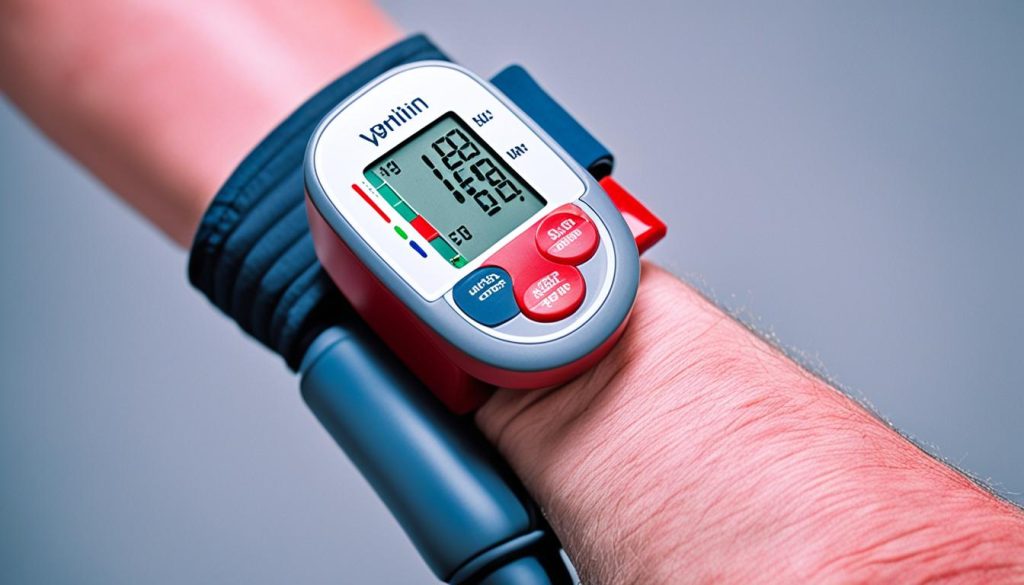If you have high blood pressure, also known as hypertension, you may wonder how it feels. Unlike many other health conditions, high blood pressure often doesn’t present noticeable symptoms. In fact, it is often referred to as a “silent killer” because people are often unaware of their condition until it is diagnosed during a routine medical check-up.
But don’t worry, there are still important signs that can help you recognize and manage high blood pressure effectively. Understanding the symptoms and sensations associated with high blood pressure is important for your overall health and well-being.
In this article, we will explore the myth of high blood pressure symptoms, delve into the indirectly related symptoms, understand blood pressure numbers, discuss risk factors, and know when to seek medical help. We will also look into the treatment options and lifestyle changes that can help manage high blood pressure effectively.
So, let’s dive in and discover more about high blood pressure and how it can affect you.
The Myth of High Blood Pressure Symptoms
Contrary to popular belief, high blood pressure does not typically present with specific symptoms. It is often asymptomatic, which is why regular blood pressure checks are essential for early detection. Ignoring your blood pressure and relying on symptoms to alert you to a problem can be dangerous. Managing high blood pressure involves making lifestyle changes and, in some cases, taking medication as prescribed by a healthcare professional.
Understanding the Effects of High Blood Pressure
High blood pressure, also known as hypertension, is a medical condition characterized by consistently elevated blood pressure within the arteries. Over time, the effects of high blood pressure can cause damage to various organs and systems in the body, including the heart, brain, kidneys, and blood vessels. It increases the risk of heart disease, stroke, kidney disease, and other serious health conditions.
While high blood pressure itself may not produce noticeable symptoms, it can silently wreak havoc on the body. That’s why regular blood pressure checks are crucial for early detection and intervention.
Managing High Blood Pressure
When it comes to managing high blood pressure, lifestyle changes play a significant role. These changes include:
- Adopting a healthy and balanced diet
- Reducing salt intake
- Maintaining a healthy weight
- Incorporating regular physical activity
- Quitting smoking
- Limiting alcohol consumption
- Managing stress
Additionally, healthcare professionals may prescribe medications to help lower blood pressure. These medications work in different ways, such as relaxing blood vessels, reducing blood volume, or slowing down the heart rate.
It’s important to consult with a healthcare professional to determine the most appropriate treatment plan and regularly monitor blood pressure to ensure it remains within a healthy range.

| Treatment Options | Benefits |
|---|---|
| Medications |
|
| Lifestyle Changes |
|
Indirectly Related Symptoms of High Blood Pressure
While high blood pressure itself may not cause noticeable symptoms, there are certain indirect symptoms that may be associated with the condition. These include:
Blood spots in the eyes
Blood spots in the eyes, also known as subconjunctival hemorrhage, can be more common in individuals with diabetes or high blood pressure. These spots appear as tiny, red dots on the whites of the eyes and are caused by small blood vessels bursting. Although this symptom is not exclusive to high blood pressure, it may serve as a warning sign for individuals at risk.

Facial flushing
Facial flushing, characterized by redness and warmth in the face, can occur as a result of blood vessel dilation. While it can be triggered by various factors, including emotional stress and certain medications, high blood pressure can also contribute to facial flushing. It is important to note that facial flushing alone is not sufficient to diagnose high blood pressure, but it may be a symptom worth discussing with a healthcare professional.
Dizziness
Dizziness is a common symptom that may be related to high blood pressure and can also be a warning sign of a stroke. Patients with high blood pressure may experience dizziness due to reduced blood flow to the brain. It is crucial to seek medical attention if experiencing persistent or severe dizziness, as it can indicate potential risks and underlying health conditions.
While these indirect symptoms can be associated with high blood pressure, it is essential to consult with a healthcare professional for an accurate diagnosis. It is possible for these symptoms to be caused by other health conditions, so a comprehensive evaluation is necessary.
Understanding Blood Pressure Numbers
Blood pressure readings consist of two numbers: systolic (the top number) and diastolic (the bottom number). Systolic pressure measures the force of blood flow when the heart beats, while diastolic pressure measures the force between heartbeats.
Normal blood pressure is typically defined as a systolic reading of less than 120 mm Hg and a diastolic reading of less than 80 mm Hg. Elevated blood pressure falls between 120-129 mm Hg (systolic) and less than 80 mm Hg (diastolic). Hypertension (high blood pressure) is diagnosed when readings reach 130/80 mm Hg or higher.
| Blood Pressure Category | Systolic (mm Hg) | Diastolic (mm Hg) |
|---|---|---|
| Normal | Less than 120 | Less than 80 |
| Elevated | 120-129 | Less than 80 |
| Hypertension Stage 1 | 130-139 | 80-89 |
| Hypertension Stage 2 | 140 or higher | 90 or higher |
| Hypertensive Crisis | Higher than 180 | Higher than 120 |
Risk Factors and At-Risk Populations for High Blood Pressure
In order to effectively diagnose and manage high blood pressure, it is important to understand the various risk factors that can contribute to its development. By identifying and addressing these risk factors, individuals can take proactive steps towards better blood pressure management and overall cardiovascular health.
Familial and Genetic Factors
A family history of high blood pressure can significantly increase an individual’s risk of developing the condition. If a parent or close relative has been diagnosed with high blood pressure, it is crucial to be vigilant about monitoring blood pressure levels and implementing preventive measures. Genetic factors can also contribute to the risk of hypertension.
Age and Weight
Advancing age is a significant risk factor for high blood pressure, particularly after the age of 55. As individuals grow older, the walls of their arteries may become thicker and less elastic, which can lead to higher blood pressure readings. Additionally, being overweight or obese puts extra strain on the circulatory system, increasing the risk of hypertension.
Diet and Lifestyle Choices
Poor dietary choices, such as consuming a diet high in salt, can contribute to the development of high blood pressure. Excessive alcohol consumption, physical inactivity, and tobacco and illicit drug use are also linked to an increased risk of hypertension. Making dietary modifications, engaging in regular physical activity, and adopting healthy lifestyle habits can help manage blood pressure levels effectively.
Underlying Health Conditions
Several underlying health conditions can increase the risk of high blood pressure. These include sleep apnea, kidney disorders, and thyroid diseases. People with these conditions should be especially mindful of their blood pressure and work closely with healthcare professionals to manage their hypertension effectively.
By understanding these risk factors and taking appropriate measures, individuals can optimize their chances of early diagnosis and successful management of high blood pressure. Regular blood pressure checks, adherence to medical advice, and proactive lifestyle changes can go a long way in reducing the risk of complications associated with hypertension.
Risk Factors and At-Risk Populations for High Blood Pressure

| Factors | Risk |
|---|---|
| Familial and Genetic Factors | Elevated risk |
| Age | Increased risk after 55 |
| Weight | Overweight or obese individuals |
| Diet and Lifestyle Choices | High salt intake, excessive alcohol consumption, physical inactivity, tobacco and illicit drug use |
| Underlying Health Conditions | Sleep apnea, kidney disorders, thyroid diseases |
When to Seek Medical Help
If you are living with high blood pressure or have recently been diagnosed with the condition, it is crucial to seek medical help and guidance. Although high blood pressure often does not present with specific symptoms, it can increase the risk of severe health complications, such as heart attacks and strokes. Coping with high blood pressure requires proper medical intervention to effectively manage the condition and minimize potential risks.
If you fall into any of the at-risk categories or have high blood pressure readings, consult a healthcare professional to develop a personalized treatment plan. They will assess your overall health, conduct necessary tests and monitoring, and provide valuable guidance on lifestyle modifications and medication if required.
In case of extremely high blood pressure readings or the presence of alarming symptoms like chest pain, blurred vision, or slurred speech, immediate medical attention is crucial. Do not ignore these warning signs, as they may indicate a potential life-threatening situation. Time is of the essence when it comes to managing high blood pressure, and prompt medical help can significantly reduce the risk of complications.

| When to Seek Medical Help | What to Look for |
|---|---|
| If you have high blood pressure readings | Regularly monitor your blood pressure and consult a healthcare professional for personalized guidance. |
| If you experience symptoms like chest pain, blurred vision, or slurred speech | Seek immediate medical attention as these may be signs of a serious complication. |
| If you belong to at-risk categories | Consult with a healthcare professional to assess your risk and develop a suitable treatment plan. |
Treatment and Lifestyle Changes for High Blood Pressure
Treatment for high blood pressure involves a combination of medications and lifestyle changes. It is crucial to work closely with healthcare professionals to determine the most suitable treatment plan for managing high blood pressure.
Medications commonly prescribed for high blood pressure include:
- Diuretics
- ACE inhibitors
- Beta-blockers
- Calcium channel blockers
- Other vasodilators
Lifestyle changes play a significant role in managing high blood pressure. Some recommended modifications include:
- Maintaining a healthy weight
- Following a low-fat and low-sodium diet
- Quitting smoking
- Limiting alcohol intake
- Reducing stress
- Increasing physical activity
By incorporating these changes, individuals can effectively manage their high blood pressure and reduce the risk of associated complications. It is important to remember that managing high blood pressure is an ongoing process, and regular monitoring and adherence to the treatment plan are essential for long-term success.
Conclusion
High blood pressure, also known as hypertension, is a common and serious health condition that often goes unnoticed due to its lack of noticeable symptoms. Regular blood pressure checks and early detection are essential in effectively managing this condition. While there may be indirect symptoms associated with high blood pressure, such as blood spots in the eyes or facial flushing, it is crucial to consult with healthcare professionals for a proper diagnosis.
Managing high blood pressure requires a comprehensive approach. Lifestyle changes, including maintaining a healthy weight, following a low-fat and low-sodium diet, quitting smoking, limiting alcohol intake, reducing stress, and increasing physical activity, play a significant role in managing the condition. In some cases, medication may also be prescribed by healthcare professionals to help control blood pressure levels.
Ongoing medical monitoring and regular communication with healthcare professionals are vital in effectively managing high blood pressure and reducing the risk of associated complications. By taking proactive steps and following medical advice, individuals can lead a healthy and fulfilling life while effectively managing their high blood pressure.




